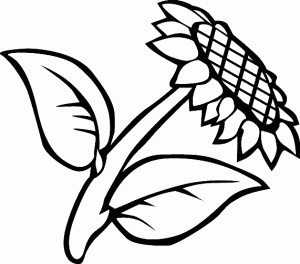Editorial Comment
- Maya-Jariego, I. & Holgado, D. (2015). Network analysis for social and community interventions. Psychosocial Intervention, 24 (3), 121-124.
- Download in pdf: [ENG] [ESP]
Network interventions
In recent years network analysis is increasing its presence in community psychology research and action. The network approach allows multilevel analysis and contributes to a relational interpretation of psychological sense of community, empowerment and other classical concepts of community psychology (Maya-Jariego, 2004). Network analysis techniques are beginning to be used in needs assessment, program evaluation, and participatory action-research strategies. There are also applications in the study and improvement of community coalitions, neighborhoods and community mediation. This special issue also includes papers that use network analysis in understanding or improving the implementation of social and community interventions.
One of the most common meanings of network interventions is the use of data from social networks to promote behavioral change, based in the theory of diffusion of innovations (Valente, 1995). This approach has been used frequently in the implementation of campaigns to disseminate health messages (Chambers, Wilson, Thompson & Harden, 2012). Accordingly, Thomas W. Valente distinguished four intervention strategies based on networks, namely: (a) the identification of leaders and agents of change, based on indicators of centrality, brokerage and other strategies for the assessment of key players; (b) segmentation into groups to simultaneously apply a significant intervention process; (C) induction strategies that promote peer interaction to enhance the multiplier effect of natural networks; and (d) alteration of the network with the addition or removal of certain relationships (Valente, 2012). In all these cases the network is the means by which the behavior change strategies are channeled.
Table 1. Emerging uses of network analysis for community intervention
|
***
However, network analysis can be integrated into the processes of social and community intervention in very different ways (Table 1). On the one hand, it can be applied at different stages of the intervention cycle, from needs assessment to impact evaluation, through implementation of activities and various forms of direct action in the community. On the other hand, it can be used as a model or as strategy, as well as for the operationalization of community concepts (see, for example, in the case of community readiness: Feinberg, Riggs & Greenberg, 2005). Although it has been applied preferably in the design and implementation of evidence-based programs, it is also a tool for effective monitoring to assessing the fidelity of implementation and sustainability of interventions (Valente, Palinkas, Czaja, Chu, & Brown, 2015). Without being exhaustive, below we summarize some of the lines of application of network analysis in the context of community action:
- The theory of diffusion of innovations is used in prevention campaigns and in spreading health messages.
- The relational data are used to guide community mediation strategies, health agents and other actions with multiplier effect.
- Both, surveys of personal networks and the description of the social network are part of needs assessment and program evaluation.
- The network analysis is used in the translation of basic relational concepts of community, such as psychological sense of community, community readiness and intergroup relations.
- The interorganizational networks serve to operationalize the collaborative structure of community coalitions.
- Network analysis is integrated into action research, through participatory sociograms, or providing feedback with visualization of networks.
- It also allows monitoring the process of implementation of programs and the transference from science to practice.
- Finally, the strategies of social support, a long tradition in psychosocial intervention, have incorporated in some cases the structural properties of personal networks.
Overview of the issue
In this monograph, we collect a number of articles that make innovative contributions to social and community intervention using social network analysis. Following the index of this volume, we read: a study that assesses the impact of collaborative networks of community organizations in implementing effective interventions (Faust, Christens, Sparks & Hingeldorf, 2015); an application of visualization of large relational databases to improve communication between professionals (Corlew, Keener, Finucane, Brewington & Nunn-Crichton, 2015); an analysis of affiliation networks that identifies two types of interfaith groups depending on how the organizations exchange resources (Todd, Houston & Suffrin, 2015); an assessment of the role of strong ties, which are developed across multiple types of relationships, between entities that form a coalition (Menger, Stallones, Cross, Henry & Chen, 2015); a description of the influence of the Family Violence Councils network in the practice of the organizations that are part of them (Rana & Allen, 2015); a theoretical review of the chains of intermediaries between researchers and professionals of intervention (Neal, Neal, Lawlor & Mills, 2015); and a survey on the variability of personal networks depending on metropolitan mobility (Maya-Jariego & Holgado, 2015).
Other works relate to the tradition of the studies of social support. Positive relationships provide emotional support resources, information and instrumental help that facilitate coping with stress and promote psychological well-being and quality of life. As shown in two studies with this approach, social networks are a protective factor against suicide and alcohol abuse in a native community of Alaska (Philip, Ford, Henry, Rasmus & Allen, 2015), while informal support resources are among the most important community assets of Asian Americans living in Florida (Weng, 2015). Let us look more closely the contributions of the monograph.
Interorganizational networks and community coalitions
One of the areas where network analysis has consolidated most clearly is the study of community coalitions, along with other forms of cooperation between local organizations and community groups. Coalitions join forces, mobilize public support, facilitate coordination, prevent duplication of services and increase the effectiveness of the intervention (Butterfoss, 2007). As demonstrated in several articles in this issue, interorganizational networks are an efficient way to operationalize the structure of the collaboration between community organizations.
Two important issues in this regard are the core-periphery structure, and interaction of individual organizations with the whole network. On the one hand, the existence of a small core of organizations densely connected to each other seems to be fundamental to the proper functioning of coalitions (Faust et al., 2015; Menger et al., 2015; Rana & Allen, 2015). On the other hand, links with a network of entities allow individual community organizations to improve their effectiveness (Faust et al., 2015), although that makes the organization is also more exposed to the influence of political and social norms of the network (Rana & Allen, 2015).
Victoria Faust, Brian E. Christens, MA Shannon and Amy E. Sparks Hingeldorf performed a retrospective study on the relationship between 23 organizations, working together over 12 years to prevent infant mortality in a city in Wisconsin, United States. Although collaboration between hospitals, community associations and social services improved over the observed period, with a slight increase in the cohesion of the inter-organizational network, this does not translate into an increase in effectiveness in reducing health inequalities for the black minority. However, network analysis can document the case of organizations that individually improved the effectiveness of its intervention through collaboration with other entities.
Lauren Marie Menger, Lorann Stallones, Jennifer Eileen Cross, Kimberly Lynn Henry and Peter Yu Chen studied networks of collaboration between 37 suicide prevention organizations in a community of Colorado, in the United States. Specifically, they examined the relations of exchange of information and resources, as well as the coordination and collaboration in providing services. The existence of a small group of organizations that have strong ties with each other proved decisive in the collaborative process. The coordinated action among entities facing the same social problem, in this case suicide, improves accessibility in the provision of services, prevent duplication of benefits and contributes to the development of shared norms in the intervention.
Rana Shaheen and Nicole E. Allen discussed the collaborative networks in five Family Violence Councils, to identify which entities had a key role. They found that organizations with greater centrality were exposed to a greater influence of council policies, and the domestic violence programs tended to have a more central role in the network than other types of organizations.
To complete this section, we have two articles analyzing the collaboration between professionals of the intervention and the distribution of community resources. The study of Laura Kate Corlew, Victoria Keener, Melissa Finucane, Laura Brewington and Rachel Nunn-Crichton illustrates the use of visualization and analysis tools for mapping networks of professional relations in different geographical regions of the Pacific. Specifically, it focuses on assessing and improving communication between more than a thousand professionals who treat the problems of climate change. Network visualization has an interesting descriptive and action-research value (Molina, Maya-Jariego & McCarty, 2014), which allows, as in this case, identifying key stakeholders, and also is used to define cohesive regional clusters and to energize communication between professionals in this area.
Finally, Nathan R. Todd, Jaclyn D. Houston and Rachael L. Suffrin use affiliation networks to assess the contribution of interfaith groups in the United States to empowerment and community change. The description of the networks of relationships among 88 groups allowed identifying two types of ecumenical groups: ones that focus primarily on resource sharing with other religious congregations, and a second type collaborating with NGOs and other diverse entities. Interfaith groups appear to function as local community organizations.
Bridging the science-practice gap, personal networks and social support
This volume is completed with some examples of network-based research on the transfer of science to practice, the structure of personal networks and social support resources. First, we have a work that interprets the transition from theory to practice in terms of relations between researchers and practitioners. Zachary P. Neal, Jennifer Watling Neal, Jennifer A. Lawlor and Kristen J. Mills based on the model of small world networks to understand the gap between scientific models and program implementation. So one way to bridging the gap consist of mediating between the two worlds (that is to say, brokering the gap) (Neal, Neal, Kornbluh, Mills & Lawlor, 2015). With an innovative approach, they analyze the chains of intermediaries between researchers and professionals intervention. As noted in the article by Neal, Neal, Kornbluh, et al. (2015), the type of agent that acts as an intermediary, as broker, may condition the dissemination of scientific knowledge and evidence-based practices. This is an issue that surely will lead to future research.
This first collection closes with a personal networks survey, representing a second tradition of network analysis in its own right. With this approach, the relations of specific individuals are analyzed, either in an individual case or a sample, in order to examine the same structural properties usually described in complete networks (Crossley, Bellotti, Edwards, Everett, Koskinen & Tranmer, 2015; Dominguez & Maya-Jariego, 2008; McCarty, 2002; Molina, Maya-Jariego, McCarty, 2014). If previous articles of the special issue are based on complete networks, Isidro Maya Jariego and Daniel Holgado analyze in this case the variability of the structural properties of personal networks depending on the metropolitan mobility of each individual. This research is based in a representative survey in a town of the metropolitan area of Seville, when small intentional samples have previously dominated. Furthermore, it follows a method characterized by generating a fixed number of contacts in each respondent (McCarty, 2002), which has proved efficient in analyzing the structures of personal networks. This approach is an evolution of the studies of social support, to which the work of Philip et al. (2015) and Weng (2015), also published in Psychosocial Intervention, are closer.
Conclusions
Network analysis is a method that “captures context” (Luke, 2005), as well as the confluence of micro- and macro-social dynamics (Maya-Jariego, 2004). In consequence, it is particularly relevant in studies of community psychology and in psychosocial interventions. As we show in this monograph, networks allow to detect patterns of collaboration that are not perceived intuitively (Todd, Houston & Suffrin, 2015), serve to examine the mutual influence of individual community organizations and networks of inter-organizational collaboration (Faust et al., 2015; Menger et al., 2015; Rana & Allen, 2015), facilitate the dissemination of evidence-based practices among professionals of the intervention (Neal, Neal, Lawlor et al., 2015), and are a tool for intervention by themselves (Corlew et al., 2015).
Social and community interventions are one of the areas where network analysis can transcend the eminently descriptive value that was originally attributed (Carrington, Scott & Wasserman, 2005), as part of action-research, detecting community organizing patterns that are not apparent to the groups involved, or with contributions to improving the effectiveness in the implementation of programs.
REFERENCES
Butterfoss, F. D. (2007). Coalitions and partnerships in community health. San Francisco, CA: John Wiley and Sons.
Carrington, P. J., Scott, J., & Wasserman, S. (Eds.). (2005). Models and methods in social network analysis. New York, NY: Cambridge University Press.
Chambers, D., Wilson, P., Thompson, C., & Harden, M. (2012). Social network analysis in healthcare settings: a systematic scoping review. PloS one, 7(8).
Corlew, L. K., Keener, V., Finucane, M., Brewington, L., & Nunn-Crichton, E. (2015). Using Social Network Analysis to Assess Communications and Develop Networking Tools Among Climate Change Professionals Across the Pacific Islands Region. Psychosocial Intervention, 24(3). Advance Online Publication.
Crossley, N., Bellotti, E., Edwards, G., Everett, M. G., Koskinen, J., & Tranmer, M. (2015). Social Network Analysis for Ego-Nets: Social Network Analysis for Actor-Centred Networks. London, UK: SAGE.
Domínguez, S., & Maya-Jariego, I. (2008). Acculturation of host individuals: Immigrants and personal networks. American Journal of Community Psychology, 42(3-4), 309-327.
Faust, V., Christens, B. D., Sparks, S. M. A., & Hilgendorf, A. E. (2015). Are Networks of Organizational Collaboration Associated with Organizational Learning and Effectiveness? Psychosocial Intervention, 24(3). Advance Online Publication.
Feinberg, M. E., Riggs, N. R., & Greenberg, M. T. (2005). Social networks and community prevention coalitions. Journal of Primary Prevention, 26(4), 279-298.
Luke, D. A. (2005). Getting the big picture in community science: Methods that capture context. American Journal of Community Psychology, 35(3-4), 185-200.
Maya-Jariego, I. (2004). Sentido de comunidad y potenciación comunitaria. Apuntes de psicología, 22(2), 187-211.
Maya-Jariego, I., & Holgado, D. (2015). Living in the metropolitan area. Correlation of interurban mobility with the structural cohesion of personal networks and the originative sense of community. Psychosocial Intervention, 24(3). Advance Online Publication.
McCarty, C. (2002). Structure in personal networks. Journal of social structure, 3(1), 20.
Menger, L. M., Stallones, L., Croos, J. E., Henry, K. L., & Chen, P. Y. (2015). Strengthening suicide prevention networks: Interorganizational collaboration and tie strength. Psychosocial Intervention, 24(3). Advance Online Publication.
Molina, J. L., Maya-Jariego, I., & McCarty, C. (2014). Giving Meaning to Social Networks: Methodology for Conducting and Analizing Interviews Based on Personal Networks Visualizations. In S. Dominguez, & B. Hollstein, Mixed Methods Social Networks Research. Design and Applications (pp. 305-335). New York, NY: Cambridge University Press.
Neal, J. W., Neal, Z. P., Kornbluh, M., Mills, K. J., & Lawlor, J. A. (2015). Brokering the Research–Practice Gap: A typology. American Journal of Community Psychology. Advance Online Publication.
Neal, Z. P., Neal, J. W., Lawlor, J. A., & Mills, K. J. (2015). Small worlds or worlds apart? Using network theory to understand the research-practice gap. Psychosocial Intervention, 24(3). Advance Online Publication.
Philip, J., Ford, T., Henry, D., Rasmus, S. M. & Allen, J. (2015). Relationship of Social Network to Protective Factors in Suicide and Alcohol Use Disorder Intervention for Rural Yup’ik Alaska Native Youth. Psychosocial Intervention. Advance Online Publication.
Rana, S., & Allen, N. E. (2015). Centrality measures to identify key stakeholders in Family Violence Councils. Psychosocial Intervention, 24(3). Advance Online Publication.
Todd, N. R., Houston, J. D., & Suffrin, R. L. (2015). Applying Affiliation Social Network Analysis to Understand Interfaith Groups. Psychosocial Intervention, 24(3). Advance Online Publication.
Valente, T. W. (1995). Network models of the diffusion of innovations. Cresskill, NJ: Hampton Press.
Valente, T. W. (2012). Network interventions. Science, 337(6090), 49-53.
Valente, T. W., Palinkas, L. A., Czaja, S., Chu, K. H., & Brown, C. H. (2015). Social network analysis for program implementation. PloS one, 10(6).
Weng, S. (2015). Asset Mapping for an Asian American Community: Informal and Formal Resources for Community Building. Psychosocial Intervention. Advance Online Publication.















